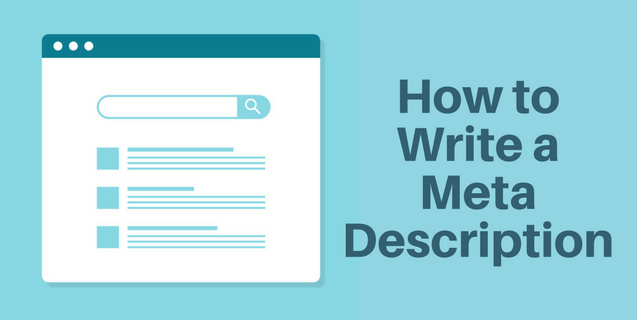Regretfully, meta descriptions are often a less-loved stepchild of the SEO world. And while that analogy may seem a little brash, we jump to these extremes because, with a relatively little effort, updates to missing or poorly-optimized meta descriptions can often lead to positive change for your website. Let’s discuss how to write a meta description further, beginning first with a few basics and then transitioning into a few best practices and useful tools:
Meta Description Definition
A meta description is an HTML tag meant to summarize the page content and user experience in search engines. HTML tags can be added to each page and search engines will often use this attribute to display in SERPs. Here’s a direct quote from Google to paint this picture a little clearer:
“The description attribute within the tag is a good way to provide a concise, human-readable summary of each page’s content.”
If hard-coding your meta description, be sure to include the tag in the category of your HTML.
Where They Appear
We can promise you’ve seen a meta description when using your favorite search engine, but many searchers may not realize these snippets of copy are very much controllable. Shared below is an example of how they appear, not only in HTML but also within Google:
HTML Example:
SERP Example:
Writing a Great Meta Description
Now that we’ve established what a meta description is and where you see them in your day-to-day searching, let’s dig into how you can make them work for your website.
Color Within the Lines
By this, we mean it’s best to follow Google’s preferred character count when writing a meta description. A previous best practice was anywhere between 150-160 characters, but as many of you may be aware, Google recently updated the snippet length to allow even more characters to display. Meta descriptions can now contain anywhere between 160-230 characters. If writing more than this, the description runs the risk of being truncated.
Incorporate Relevant Keyword Targeting
When possible and natural, we strongly encourage the inclusion of the page’s target keyword. A benefit of following this technique is represented via bolded keywords in the description. These bolded keywords and phrases can lead to improved clickthrough rates within the SERP. Using the query “SEO Agency Denver,” you’ll see each of these words bolded within the description below. Pretty cool!
Prioritize Pages and Be Unique
The time required to write a unique description for every single page of your website may be too high to be feasible, so instead focus on the mission critical pages first. When moving through these pages, we strongly encourage that each description is unique. Google will auto-generate descriptions for your lower-priority pages.For more on this very topic, reference this video courtesy of Google Webmasters + Matt Cutts.
Include a Call-To-Action
We’ve found this is typically easiest to implement for B2C websites, but consider introducing a relevant and applicable call to action, regardless of your industry. When incorporating a call-to-action in a meta description, we recommend inviting the searcher to perform an action. Compelling CTAs can help to improve clickthrough rates within the SERPs, which is very much part of the ranking algorithm!
Stay True to Yourself and True to the User
Sounds deep, right? In all seriousness, it’s critically important the meta description reflect the user experience of the page. Any promise made in the description should be honored within the page. A misaligned meta description can lead to pogo-sticking. Bad!
Helpful Tools
By now, we’ve dug into the importance of a meta description and some general practices to consider when writing the tags. It may seem like a lot to digest at first glance, but fear not, there are countless tools available to make your meta description optimization efforts easier. Here are a few of our favorites:
Screaming Frog
Screaming Frog is an exceptionally useful tool for nearly all things SEO. If you’re not familiar with the Frog, check it out! As it relates to meta descriptions, a quick crawl with Screaming Frog will allow you to see descriptions that are too long, too short, duplicated or missing altogether. This is a wonderful way to prioritize your efforts.
Google Search Console
By referencing the HTML Improvements section of your Google Search Console profile, you can identify potential issues Google has uncovered when crawling the site. While the result may be nearly identical to the Screaming Frog crawl, we still encourage a quick reference to this tool. It is always important to see what Google is saying to you directly (versus third-party tools).
SERP Snippet Tool
A slight wildcard in our list, we love double-checking meta descriptions with this tool before pushing them live. The benefit of doing so is simple. This tool allows webmasters the ability to preview a newly-optimized description in SERPs, prior to publishing. As the tool suggests, “Predict how your web page will look in Google’s search results.”
In Summary
We’ve covered quite a bit of ground here, but meta descriptions are worth some time and effort. These oft-overlooked elements provide a quick way to gather new users. They provide a free and easy opportunity for your page to make a pitch! Do you have more questions about meta descriptions or SEO?
Reach out to our SEO team here at Volume Nine today.



